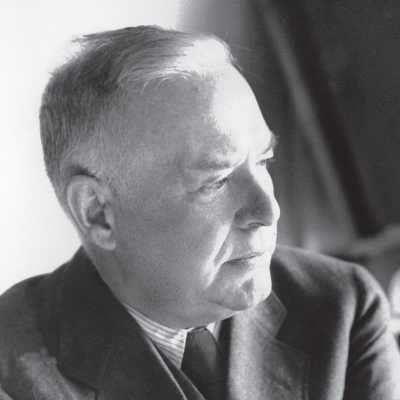 |
New York Law School
cordially invites you to celebrate the appointment of
RICHARD K. SHERWIN
as the
WALLACE STEVENS PROFESSOR OF LAW
Law and the Poetic Imagination
Wednesday, April 22, 2015
6:00 p.m. - 8:00 p.m.
New York Law School
185 West Broadway, Room W220
New York, NY 10013
To register, click here.
A reception will follow.
|
RICHARD K. SHERWIN
Wallace Stevens Professor of Law |
 |
Richard K. Sherwin has gained international recognition for his path-breaking work exploring the interrelationship between law and culture. In his pioneering book, When Law Goes Pop: The Vanishing Line between Law and Popular Culture (2000), Professor Sherwin describes the various ways in which lawyers and judges use familiar narratives, metaphors, and visual images in everyday legal practice. In this book, together with dozens of articles and book chapters, Professor Sherwin vividly shows that law is not an autonomous discipline. There is a two-way street between law and mainstream culture by which conceptions of law originate, or get transformed, and then work their way back into the courtroom. Today, that cultural dynamic is giving rise not only to new forms of visual meaning making, but also to new anxieties. In an age of docudramas and increasingly powerful digital simulations, the line between truth and fiction grows ever more elusive. In his most recent book, Visualizing Law in the Age of the Digital Baroque: Arabesques & Entanglements (2011), Professor Sherwin explores the impact on law of these cultural, cognitive, and technological developments.
In addition to his books, chapters, and articles, Professor Sherwin also has edited two cross-disciplinary volumes and is currently at work on a third which explores the cultural history of law in the twentieth century. His numerous publications and lectures worldwide have made significant contributions to the fields of law and literature, cultural legal studies, jurisprudence, as well as the emerging field of visual legal studies.
In 2013, Professor Sherwin received a Fulbright award and served as the Fulbright Canada Visiting Research Chair in Law and Literature at McGill University’s Institute for the Public Life of Arts and Ideas, where he was in residence during the spring 2014 semester. In 2014, he received a Humanities Research Centre Fellowship and served as Visiting Research Fellow at Australia National University. Professor Sherwin also recently appeared as the lead commentator in Jeremiah Zagar's HBO documentary film Captivated: The Trials of Pamela Smart, which illustrates the complications that ensue when the mass media run with a story about a notorious criminal case before the actual trial begins.
In 2001, Professor Sherwin began teaching ‘Visual Persuasion in the Law,’ the first course in the nation to focus on the role, efficacy, and pitfalls of using visual evidence and visual advocacy in contemporary legal practice. In 2005, he launched the Visual Persuasion Project website, the first website dedicated to showcasing “best practices” in the visual litigation field.
Professor Sherwin began his legal career as an Assistant District Attorney in the Manhattan District Attorney's office under the leadership of Robert Morgenthau. One of his early cases, New York v. Ferber, was a path-breaking child pornography prosecution that was successfully argued before the U.S. Supreme Court. In his first teaching position, at NYU Law School, he worked closely with Professor Anthony Amsterdam and world-renowned cognitive psychologist Jerome Bruner to develop an interdisciplinary approach to law that came to be known as ‘Lawyering Theory.’ This collaboration also resulted in the creation of teaching materials for a pioneering course called ‘Lawyering,’ which Professor Sherwin taught at NYU. He subsequently brought an adapted version of the course to NYLS in 1988.
Richard Sherwin's commitment to a pedagogy that strives to integrate legal theory and practice has been a touchstone of his career at New York Law School. His creative scholarship provides a brilliant example of bridging the gap between theory and practice – a pedagogic approach that flourishes at NYLS. Inside the classroom and out, Professor Sherwin has worked unstintingly to remind us never to lose sight of the human drama of law, as well as the art and nobility of lawyering. In this spirit, law and the humanities remain essential partners, uniting wisdom and eloquence in the perennial quest for justice.
|
WALLACE STEVENS |
 |
Wallace Stevens (1879-1955) was a graduate of the New York Law School Class of 1903. He practiced insurance law for more than 50 years and published seven volumes of poetry. He was elected to the National Institute of Arts and Letters, received the National Book Award (twice), and won the Pulitzer Prize for his Collected Poems in 1955. Noted literary critic Harold Bloom called him “the best and most representative American poet of our time.”
Mr. Stevens was born in Reading, Pennsylvania. He attended Harvard University, where he became the editor of the Harvard Monthly, a literary magazine. He subsequently worked as a reporter for the New York Evening Post, then, at his father’s suggestion, began to study law. He enrolled at NYLS in 1901, graduating two years later. Mr. Stevens worked briefly at several law firms in New York City, then at a number of insurance companies; in 1916, he began to work for the Hartford Accident and Indemnity Company, where he remained for the rest of his life, becoming Vice President in 1934.
Mr. Stevens began publishing poems in 1914. In 1923, he published Harmonium, his first volume, which includes such celebrated poems as “Thirteen Ways of Looking at a Blackbird,” “The Emperor of Ice Cream,” and “Le Monocle de Mon Oncle.” According to the Poetry Foundation, “Harmonium bears ample evidence of Stevens's wide-ranging talents: an extraordinary vocabulary, a flair for memorable phrasing, an accomplished sense of imagery, and the ability to both lampoon and philosophize.” Mr. Stevens followed up with Ideas of Order (1935), The Man with the Blue Guitar (1937), Parts of a World (1942), Notes Toward a Supreme Fiction (1942), The Auroras of Autumn (1950), and Collected Poems (1955). By the early 1950s, many critics considered him one of America’s greatest contemporary poets. “He was a master stylist, employing an extraordinary vocabulary and a rigorous precision in crafting his poems,” states the Poetry Foundation in its biography of him. “But he was also a philosopher of aesthetics, vigorously exploring the notion of poetry as the supreme fusion of the creative imagination and objective reality.”
As both a poet and a lawyer, Wallace Stevens never ceased refining his craft. That is the legacy and the aspiration that the Stevens Chair seeks to celebrate and preserve. The professorship honors the memory of a great American poet and New York Law School alumnus, and acknowledges the arts and humanities as a force in the lives of so many New York Law School lawyers as well as the legal community at large.
|
|
|
|
|
